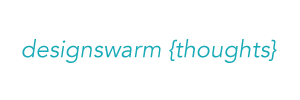What does it take to make better connected products?
This time last year, Usman Haque and I were reminded that it had been almost five years since our ‘Open Internet of Things Definition’ event at Google Campus. Five years is both a long time and not a long time, but we thought it would be fun to revisit. There is however little point in asking people to revisit work already done without moving forward in some way, otherwise you risk being like the high school reunion noone wants to attend.
So what had changed since 2012, well as my friend Steve Silver informed me, FUD. Fear, uncertainty and doubt currently cripples the internet of things.
In London, fear that a crowdfunding campaign will never deliver, uncertainty anyone in the investment community will ever care, and doubt of the quality and security of what is being deployed in our homes, at work and in our cities.
That’s enough to kill an industry dead in its tracks.
The internet of things was coined by Kevin Ashton in 2001, so 16 years is a little young to kill an industry.
So Usman and I started talking about what the Open Internet of Things Definition’s role was. It brought together people across industries, and it was aspirational but it didn’t have any teeth.
How could we build something that could encourage industry to overcome the FUD and help consumers trust this fledgling industry? We had a couple of meeting with my lawyer Rosie Burbidge at Fox Williams who offered us a number of different models we could look at and we chose the certification mark.

What is a certification mark?
Certification marks or labels are used to prove to your customers that you have developed something in a particular way. Fairtrade is a mark that shows consumers that the working conditions behind food are fair. Woolmark is a certification mark to show consumers that the garment is made out of real wool.
These are marks that inform consumers and help a business differentiate themselves.
Why not for the internet of things? People should know that something is being developed in an ethical, secure way and industry could probably do with having a check-list of what constitutes an ethical and secure way to do business. This is after all an industry driven by cash-strapped SMEs, so helping them make better decisions is bound to be good for everyone.
So we got to work. We gathered 60 people from across UK & Europe on June 16th at the London Zoo (thanks to Alasdair Davies). And we started working groups around Security, Privacy, Interoperability, Provenance and others. We then carried on on Slack and in monthly calls to get to a shortlist of 30 principles which we published a couple of weeks ago.
These are some of the highlights for me:
- Encouraging open sourceness but not imposing it. This will polarise many in the open source hardware community but the strength of the mark will be in being able to be adopted in a commercial environment where people do have to make money, either through their IP over the hardware or the software. We have to be able to inspire people to do things in a better way, but not force them to.
- Encouraging the same ‘switch guarantee’ as we have in banking and in the energy sector. A consumer should be able to change the digital provider for their product if that company starts to behave in a way that is detrimental to them. This I really believe, will encourage organisations to constantly be more competitive.
- Encouraging industry to be transparent about the expected lifecycle of a product. We live in times of in-built obsolescence, but that’s not a good thing. We continue to treat natural resources as an income and not capital (in the worlds of E.F. Shumacher) which will eventually bite us in the ass. E-waste is being more regulated and I suspect eventually companies will be charged for the products that end up being thrown away within 2 years of manufacturing. The very least we can ask people to do is to be clear about how long they expect the product to last and more crucially, how long they are willing to support the product for!
The rest of the principles really concentrate on transparency and security, basically extending the reach of GDPR into the world of hardware.
Broadly the mark is there to support SMEs in this space and product owners to think of the impact of what they are building and to plan for the future, something that is hard to do when you’re at the ‘coalface’ of development.
I think this is an important opportunity and the next months will be spent showing these principles to as many people as possible, both across industry but also in the consumer rights world in the UK, the US and Europe to get their feedback.
As an entrepreneur in this space, I and others deserve to make the internet of things a field of practice that has a little less FUD in it, and much more fun.
